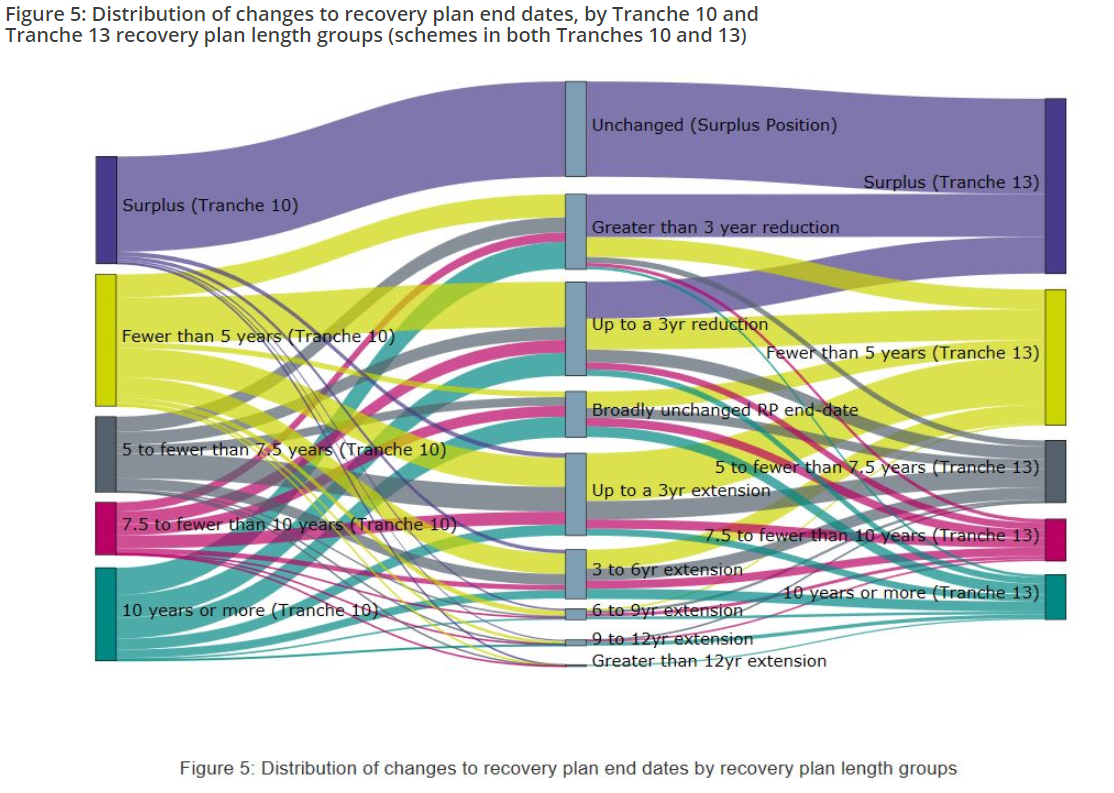Data crunch: Detailed analysis of triennial valuations with due dates up to December 2019 confirm the gradual improvement in the security of defined benefits in the UK, but experts warn that care is needed to keep schemes on track this year.
The Pensions Regulator’s tranche 13 analysis covers valuations dated between September 22 2017 and September 21 2018. These negotiations were due to be finalised and sent to the watchdog between December 2018 and the end of last year.
The bulletin shows the tranche of schemes in a notably better situation than peers with different valuation years and the segment’s previous valuations in 2014-15. Thirty-seven per cent of schemes were in surplus with a mean funding level of 109 per cent relative to their technical provisions, while the schemes in deficit had an average funding level of 84.1 per cent.
The sunny overall picture does mask instances of real concern. A breakdown of schemes by maturity reveals that 17 schemes still have less than 80 per cent of the assets needed to meet liabilities, despite more than three-quarters of their liabilities being to pensioner members.
This piece of history may be the last ‘good news’ on the scheme funding front for a while
David Everett, LCP
Skies darken ahead
Challenges are also now apparent for the wider DB universe. Discount rates used by schemes are now in negative territory in real terms, and the shock that the current financial crisis is inflicting on sponsors could see future contributions dry up in some cases.
David Everett, partner and head of pensions research at LCP, comments: “This piece of history may be the last ‘good news’ on the scheme funding front for a while.
“If so, it will mark the end of a period extending over four valuation cycles under the current funding regime, where many schemes have gradually improved their funding position thanks to significant deficit repair contributions, mainly positive investment markets, the use of hedging by some, while having to reflect significant falls in bond yields and increases in life expectancy.”
Lewys Curteis, an associate at Barnett Waddingham, agrees: “TPR’s scheme funding analysis provides schemes with a good opportunity to benchmark their funding plans relative to their peers. However, with the DB funding regime under review, companies and trustees should be thinking ahead to how their funding plans will measure up under the new guidelines.
“Developing a robust long-term funding plan will be a key requirement for schemes, and one that will require careful thought in the context of the economic damage caused by Covid-19.”

Source: The Pensions Regulator
The gloomier analysis offered up by the two consultants is one backed up by the latest 7800 Index from the Pension Protection Fund, which measures funding against the cost of securing PPF-level benefits with an insurer.
The aggregate deficit tracked by the index crept up to £199.5bn at the end of July 2020, from £174.8bn a month earlier. Despite the large total figure, average funding only moved to 89.9 per cent from 91 per cent.
More work to do on Covid recovery
Vishal Makkar, head of retirement consulting at Buck in the UK, says schemes would do well to ignore the minutiae of wobbles in the index, which “are nothing compared with the turbulence schemes have endured so far this year, with even more economic uncertainty ahead of them”.
Mr Makkar reiterates that the crisis has had starkly differing impacts on sponsors, with some carrying on as normal while others come under existential pressure.
“Pensions scheme trustees from the latter group can still work hard in the interests of their members, by managing risks and good governance. However, without certain and clear intervention from the government and big banks, there may be little more trustees can do when the sponsor simply has no cash to put in the pension scheme or the business,” he says.
“As every indication suggests that the UK economy is heading for a severe recession, the PPF will undoubtedly come under pressure. Even with recent interventions by the government, large sectors such as hospitality and travel could still see mass insolvencies.
“If the PPF does end up taking on large numbers of pension scheme members as a result of sponsor failures, the outcome could have devastating effects for both retirees and employees all over the country,” he adds.






















